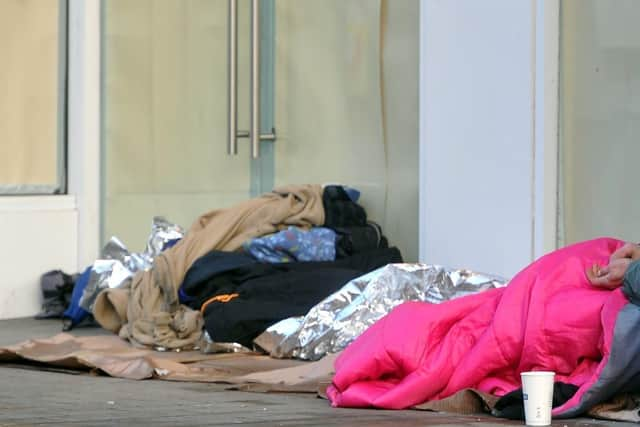Hundreds of Doncaster families faced homelessness in the run up to Christmas


Housing charity Shelter has warned that councils are struggling to cope with the volume of people needing support amid a national "housing emergency". Following the introduction of the Homelessness Reduction Act in 2017, councils in England must provide support to eligible homeless households, as well as those at risk of becoming homeless in the next 56 days. Ministry of Housing, Communities and Local Government data shows there were 347 households due support after applying for help from Doncaster Borough Council between October and December, including 109 families with children. Of these, 99, or 29%, were at risk of homelessness, meaning the council had to work with them to prevent them losing their home. The remaining 248 were already homeless, in which case the council has to help them secure accommodation for a period of at least six months. READ MORE: MISSING: Can you help police trace these missing men and women?
Across England, more than 61,000 households were owed a duty under the act over the three months to December – more than 20,000 of them families with children. Polly Neate, chief executive of Shelter, said the figures painted a bleak picture of the housing landscape in England. "It’s little wonder that local councils are finding it difficult to cope with the sheer volume of people turning to them for help," she said. "Beyond those sleeping rough on our streets, tens of thousands of homeless families are living in temporary accommodation, including emergency B&Bs and hostels. "Our advisers see first-hand the unbearable anguish of parents who can’t tell their children when they’ll have a place to call home." Almost one in five homeless or at risk households in Doncaster lost their last secure home because their assured shorthold tenancy – the most common type of private rental contract – ended. There were also 15 households made homeless because their social tenancy came to an end – 4% of the total – while 36 came from supported housing, which could include refuges or housing for elderly or disabled people. Of the social tenants, six lost their homes because they were behind on their rent.
Advertisement
Hide AdAdvertisement
Hide Ad

What does homelessness look like in Doncaster? Of the households owed support by Doncaster Borough Council: 277 contained a person with at least one high need – 88 people had an illness or physical disability, 156 had a mental health condition, 30 a learning disability, and seven were elderly, 61 were headed by a single mother, and 19 by a single father. Six were at risk of homelessness because of so-called no-fault evictions, after their landlord issued them with a soon-to-be banned Section 21 notice.49 lost their last home because of domestic abuse. 39 were sleeping rough at the time they applied for help from the council, 107, or 31%, were headed by a person aged 25-34 – the most common age group
Ms Neate said a chronic lack of social homes and the housing benefit freeze were contributing to the crisis. “The majority of families who are now homeless are working, but this is just not enough to overcome the hefty cost of private renting or the impact of excessive welfare cuts," she said. "The bottom line is that you cannot solve homelessness without homes that people can actually afford to live in, which is why we want the government to commit to build 3.1 million more social homes over the next 20 years." A spokesperson for the Ministry of Housing, Communities and Local Government said: “Recent figures show encouraging signs that the Homelessness Reduction Act is making a real difference in providing vulnerable people with the support they need, and at an earlier stage. “But we know there is more to do, which is why we’re investing £1.2bn to tackle homelessness, and empowering councils to build more council homes to ensure everyone has a safe and secure home to call their own.”